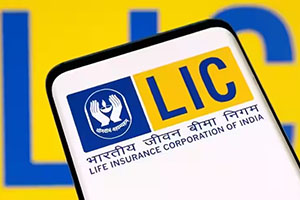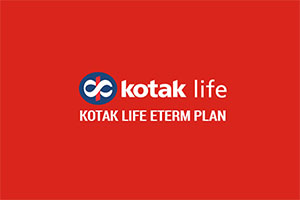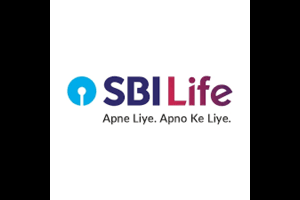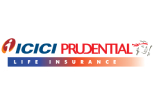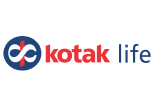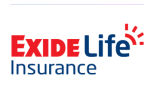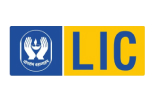Buy Best Term Insurance Plan & Policy Online in India
A term insurance plan guarantees that in case of your death, your nominee is paid a lump sum to meet essential living expenses and financial obligations.
This is why it becomes important to select the right term insurance plan to protect your family financially. Due to the availability of a large number of policies in India, it becomes difficult to find the best policy that fulfills your needs. This article will give you insights on some of the best term insurance with return of premium being offered by well-known banks and companies to enable you to arrive at the right decision. This article will help you choose the best term insurance plans with return of premium. Click here for further details on how to choose the right insurance policy.
Importance of including term insurance in financial planning
A term insurance plan is possibly one of the easiest and the most cost-efficient way to secure your family’s financial future. If the applicant’s death occurs during the period of the policy, a term policy offers their beneficiary or family a death benefit so that they do not have any difficulties to meet their financial needs. You could also opt for term insurance with return of premium to have an additional feature to get back all the premiums respond if nothing happens to you in the policy period.
Insurance firms may offer other plans or options such as critical illness cover, accidental death benefit or waiver of premium that can be added to your term plan. So, on one hand you are able to build up your separate portfolio for your family and, on the other, you get the amount repaid to yourself in any other case. This gives you great security in addition to your thoroughly executed financial plan.
Online term insurance in India market overview until January 2025
The online term insurance market is expected to see a rise in 2025 as more people use the internet and want to protect their money. People are buying insurance on their terms today through their mobile phones and computers, increasing the sale of online term insurance.
Leading insurance companies are offering diverse products according to unique requirements of customers. For example, ICICI Prudential's iProtect Smart plan offers coverage for 34 critical illnesses, accidental death benefits and terminal illness covering all at very reasonable premiums.
Non-life insurers, like the health insurance sector, is expected to grow by double digits in 2025 and insurance companies are expecting double digit growth in 2025. Over recent years, other areas such as pet insurance, liability insurance and housing insurance, are becoming more popular in the insurance sector. In order to hike the Foreign Direct Investment (FDI) in the insurance segment up to 100%, the government is making plans. In turn, more money from other countries can bring different types of insurance. More Indians are also buying term insurance online and keeping a track of all their policies.

What is term insurance?
Life insurance is a crucial financial tool that helps protect your family's future by providing them with financial support if something happens to you. Among the various types available, term life insurance stands out as the simplest and most cost-effective option. It works by offering coverage for a specific period, called the term. A term is during which you pay regular premiums to maintain the policy. If you pass away during this term, your chosen beneficiaries (usually family members) receive a guaranteed death benefit payment that can help replace your income and maintain their lifestyle.
Unlike permanent life insurance options such as whole life, universal life, or variable universal life which provide lifetime coverage at fixed premiums, term insurance is specifically designed for pure income replacement during your working years. It functions similarly to other types of insurance, like car or home insurance: you're covered while paying premiums, but there's no return of premium if no claim is made. The main advantage of term insurance is that you can choose a term insurance with return of premium at affordable prices compared to permanent life insurance.
Definition and Key Features
Term insurance is a simple life insurance plan that provides financial protection to the policyholder's family in case of their death during the policy period. The insurance company pays a lump sum amount, called the death benefit, to the nominee. Some plans, like term insurance with return of premium, refund the premiums paid if the policyholder survives the term.
- Affordable Premiums: Term insurance offers large coverage amounts at low costs, making it budget-friendly.
- Fixed Coverage Period: The policy covers a specific term, such as 10, 20, or 30 years.
- High Coverage: Provides a substantial sum assured to secure the family’s financial future.
- No Maturity Benefit: Most plans do not pay anything if the policyholder survives the term, except for term insurance with return of premium, which refunds the premiums.
- Customisation Options: Additional features, such as critical illness cover or accidental death benefit, can be added for better protection.
- Tax Benefits: Premiums paid and the death benefit received are eligible for tax deductions and exemptions under applicable laws.
- Flexibility: Suitable for people looking for straightforward financial protection, with options to get back premiums in specific plans.
Benefits of opting for Term Insurance
1.Financial Security for Family
Term insurance ensures the family’s financial stability if the policyholder passes away during the term. The death benefit helps cover expenses like daily needs, education, or medical costs.
2. Affordable coverage
It provides significant financial protection at a low premium, making it accessible for most people. Plans like term insurance with return of premium allow you to enjoy the benefits of both protection and refunded premiums if nothing happens during the policy term.
3. Debt management
The payout can help the family pay off debts like home loans, car loans, or other liabilities.
4. Customisable plans
Riders, like critical illness or waiver of premium, can enhance the policy to meet individual needs, ensuring comprehensive coverage.
5. Tax savings
You can save on taxes with deductions for the premiums paid, and the death benefit is usually tax-free for the nominee.
6. Peace of mind
Knowing that your family is financially protected provides a sense of security. For added benefits, term insurance with return of premium ensures you get your money back if you outlive the policy term.
7. Flexible terms
You can choose a policy term that matches your financial goals, such as covering a loan period or securing your dependents until they are independent.
8. Return of premium
The premiums qualify for tax deductions under Section 80C of the Income Tax Act, while the death benefit is tax-free under Section 10(10D).
Differences Between Term Insurance and Other Life Insurance Products
- Purpose of the policy:
Term insurance focuses solely on providing financial protection to the policyholder's family in the event of their death during the policy term. It is purely a risk-cover product. On the other hand, other life insurance products, such as endowment plans or whole life insurance, combine risk coverage with savings or investment components. For example, while term insurance pays only the death benefit, an endowment plan builds a maturity benefit over time, which is paid even if the policyholder survives the policy term.
- Premium costs:
Term insurance has significantly lower premiums compared to other life insurance products. It is designed to provide maximum coverage at a minimal cost. In contrast, plans like whole life or endowment policies have higher premiums because they include both life coverage and savings or investment elements. However, term insurance with return of premium provides a middle ground, offering the benefit of premium refunds while remaining more affordable than many other life insurance products.
- Maturity benefits:
Traditional term insurance does not offer any payout if the policyholder survives the policy term. It is designed to provide financial support only in case of death. In contrast, other life insurance products, such as endowment or money-back plans, offer maturity benefits along with bonuses or guaranteed returns. Term insurance with return of premium, however, stands out as an exception in term plans, as it refunds all the premiums paid if the policyholder outlives the policy term.
- Coverage amount:
Term insurance provides a high sum assured compared to the premiums paid, making it ideal for securing large financial needs, such as paying off loans or providing for dependents. Other life insurance products generally offer a lower sum assured for the same premium, as a portion of the premium is allocated to the savings or investment component.
- Flexibility and riders:
Both term insurance and other life insurance products offer riders, such as critical illness cover or accidental death benefits. However, term insurance is more flexible in terms of coverage duration and rider selection. Other plans, like endowment or whole life insurance, often have stricter terms, as they are tied to savings or investment goals. Plans like term insurance with return of premium can also be customised with riders for added benefits.
- Investment focus:
Term insurance, including term insurance with return of premium, is a protection-focused product. It does not aim to build wealth or generate returns beyond the refunded premiums. On the other hand, products like ULIPs (Unit-Linked Insurance Plans) and endowment plans combine insurance with investment, allowing policyholders to grow their money over time.
- Policy duration:
Term insurance policies typically cover a fixed period, such as 10, 20, or 30 years, and end when the term expires. Other life insurance products, like whole life policies, can provide coverage for the policyholder's entire life, with payouts and bonuses accumulating over time.
- Simplicity:
Term insurance is straightforward, focusing solely on providing financial protection against the risk of premature death. Other life insurance products can be more complex due to their savings, investment, or bonus features, which require more detailed understanding and management.
Top Term Insurance Plans in India [2025]
1. ICICI Prudential iProtect Smart
Key Features and Benefits
- Comprehensive coverage against 34 critical illnesses
- Multiple payout options including lump sum and monthly income
- Additional coverage for terminal illness
- Built-in accidental death benefit
- Waiver of premium on disability
- Option to increase coverage at key life stages
- Return of premium variant available
Eligibility Criteria
- Entry age: 18-65 years
- Maximum maturity age: 85 years
- Minimum sum assured: ₹25 lakhs
- Maximum sum assured: No limit (subject to underwriting)
- Policy term options: 10-40 years
Premium Details
- Starting premium: ₹600 per month for ₹1 crore coverage (30-year-old non-smoker)
- Premium payment options: Monthly, quarterly, half-yearly, and annual
- Premium payment terms: Regular pay, limited pay (5/10/15 years)
- Special rates for female policyholders
- Extra premium for smokers and medical conditions
2. HDFC Life Click 2 Protect Super
Key Features and Benefits
- Life stage protection with automatic increase in coverage
- Income plus option for regular monthly payments to family
- Critical illness coverage up to ₹50 lakhs
- Joint life coverage option
- Premium waiver benefit
- Special premium rates for women and non-tobacco users
Eligibility Criteria
- Minimum entry age: 18 years
- Maximum entry age: 65 years
- Policy term: 5-40 years
- Maximum maturity age: 75 years
- Minimum sum assured: ₹20 lakhs
Premium Details
- Base premium starting at ₹700 per month for ₹1 crore coverage
- Flexible premium payment modes
- Limited pay options are available
- Discounts for higher sum assured
- Additional loading for substandard lives
3. Max Life Smart Secure Plus
Key Features and Benefits
- Special exit option at age 60
- Coverage against 40 critical illnesses
- Job loss protection with premium waiver
- Additional sum assured on special life events
- Multiple death benefit payout options
- Free financial planning sessions
Eligibility Criteria
- Entry age: 18-65 years
- Maximum maturity age: 85 years
- Minimum sum assured: ₹25 lakhs
- Maximum sum assured: No limit (subject to income)
- Policy term: 10-50 years
Premium Details
- Starting at ₹650 monthly for ₹1 crore coverage (30-year-old)
- Special rates for non-smokers
- Extra premium for hazardous occupations
- Multi-pay discount available
- 8% discount on annual premium payment mode
4. Tata AIA Sampoorna Raksha Supreme
Key Features and Benefits
- Coverage until age 100 years
- Built-in terminal illness benefit
- Special child education addition
- Spouse coverage continuation benefit
- Critical illness acceleration benefit
- Long term care benefit
Eligibility Criteria
- Minimum age: 18 years
- Maximum entry age: 65 years
- Policy term: 10-40 years
- Minimum sum assured: ₹30 lakhs
- Maximum sum assured: Based on income proof
Premium Details
- Base premium from ₹750 per month
- Premium payment terms: Regular/Limited (12/15/20 years)
- Health and lifestyle-based pricing
- Multi-policy discount of 5%
- Online purchase discount of 3%
5. Bajaj Allianz e-Touch
Key Features and Benefits
- Single premium option available
- Return of premium variant
- Child education support benefit
- Accidental permanent disability cover
- Terminal illness advance benefit
- Premium break option
Eligibility Criteria
- Entry age range: 18-60 years
- Maximum maturity age: 80 years
- Minimum sum assured: ₹20 lakhs
- Maximum coverage: No upper limit
- Policy terms: 10-30 years
Premium Details
- Starting premium: ₹600 monthly
- Limited pay options (5/10/15/20 years)
- Premium frequency loading: Monthly (5%), Quarterly (4%)
- High sum assured rebates
- Preferred rates for females
How to Choose the Best Term Insurance Plan
1. Assessing your coverage needs
Your insurance coverage should ideally be 15-20 times your annual income. Consider factors like:
- Outstanding loans and debts
- Children's future education expenses
- Spouse's retirement needs
- Expected inflation rate (usually 6-7% annually)
- Regular household expenses
- Future financial goals
2. Comparing Premium rates and benefits
When comparing plans, evaluate:
- Base premium rates across insurers
- Additional rider costs
- Premium payment flexibility
- Coverage options and restrictions
- Policy term alternatives
- Claim settlement processes
3. Evaluating claim settlement ratios of insurers
Review the latest claim settlement ratios from IRDAI:
- Look for ratios above 95%
- Check three-year trends
- Consider both the number and value of claims
- Examine claim processing time
- Analyse claim rejection reasons
4. Considering Additional Riders and Options
Common riders include:
- Accidental death benefit (doubles payout)
- Critical illness coverage (up to ₹50 lakhs)
- Disability income benefit
- Premium waiver benefit
- Terminal illness benefit
- Child education support
Benefits of Buying Term Insurance Online
1. Convenience and Time-Saving Aspects
Buying term insurance online is very convenient. You can compare policies, check benefits, and purchase a plan from the comfort of your home. There is no need to visit an insurance office or meet an agent. The entire process is quick and can often be completed within minutes. This convenience also applies to term insurance with return of premium, where you can easily compare refund benefits along with coverage details online.
2. Access to a Wider Range of Options
When buying term insurance online, you have access to many different policies from various insurers. This makes it easy to compare features, premiums, and benefits to find the one that suits your needs best. For example, if you are interested in term insurance with return of premium, online platforms clearly show which plans include this feature and what their refund terms are.
3. Potential Cost Savings and Discounts
Purchasing term insurance online often costs less than buying through an agent. Insurance companies save on overhead costs, such as office space and agent commissions, and pass on these savings to customers. Additionally, online platforms frequently offer exclusive discounts, even for popular plans like term insurance with return of premium, making them more affordable.
4. Ease of Policy Management and Renewals
Managing your term insurance policy is easier online. You can log in to the insurer’s website or app to check your policy details, make payments, or update your information. Renewing your policy is also simple, with reminders sent before the due date. This convenience is available for all plans, including term insurance with return of premium, ensuring continuous coverage and a smooth experience.
Step-by-Step guide to purchasing term insurance online
1. Researching and Comparing Plans
Begin by identifying your coverage needs. Consider factors like your family's financial requirements, outstanding debts, and future expenses. Once you have a clear understanding, visit reputable insurance websites to explore various term insurance plans. Pay attention to features, benefits, and premium amounts. If you're interested in term insurance with return of premium, ensure to filter your search to include these specific plans. Comparing different policies will help you select one that aligns with your financial goals.
2. Using Online Premium Calculators
Most insurance providers offer online premium calculators. These tools allow you to input details like age, coverage amount, and policy term to estimate the premium you'll need to pay. For term insurance with return of premium, the calculator will also show the premiums considering the return feature. This step helps in budgeting and understanding the financial commitment involved.
3. Filling Out the Application Form
After selecting a suitable plan, proceed to fill out the online application form. You'll need to provide personal information such as your name, contact details, date of birth, occupation, and lifestyle habits like smoking or drinking. Accuracy is crucial here, as any discrepancies can affect the validity of your policy.
4. Submitting Necessary Documents
You'll be required to submit documents for identity verification, address proof, and income proof. Commonly accepted documents include Aadhaar card, PAN card, passport, utility bills, and salary slips or income tax returns. Many insurers allow you to upload scanned copies directly on their portal, simplifying the process.
5. Undergoing Medical Examinations, if Required
Depending on factors like your age, coverage amount, and health declarations, the insurer might request a medical examination. This is to assess your health status and determine the risk involved. Some insurers offer the convenience of scheduling medical tests at your home or a nearby clinic.
6. Making the Premium Payment
Once all information is verified, you'll proceed to pay the premium. Online platforms typically offer various payment options, including net banking, credit/debit cards, and UPI. For term insurance with return of premium, ensure you understand the premium payment terms, as these plans might have higher premiums due to the return feature.
7. Receiving Policy Documents Electronically
After successful payment and approval, the insurer will send the policy documents to your registered email address. It's advisable to download and store these documents securely. Some insurers also provide physical copies upon request.
Factors to Consider Before Purchasing
1. Policy Tenure and Sum Assured
Selecting an appropriate policy tenure is crucial. The term should ideally cover the years your dependents rely on your income. Similarly, determining the right sum assured ensures your family's financial needs are met in your absence. It's advisable to assess your current lifestyle, outstanding debts, and future obligations to decide on a suitable coverage amount.
2. Insurer's Reputation and Financial Stability
Before finalising a policy, research the insurance company's reputation and financial health. A reliable insurer with a strong claim settlement ratio ensures that claims are processed smoothly, providing peace of mind to your beneficiaries.
3. Exclusions and Limitations of the Policy
Every insurance policy comes with specific exclusions and limitations. It's imperative to read the policy document carefully to understand scenarios where the insurer may not pay out the claim. Being aware of these exclusions helps in setting the right expectations and avoiding unpleasant surprises later.
4. Flexibility in Premium Payment Options
Different policies offer various premium payment modes—monthly, quarterly, annually, or single premiums. Choose a plan that provides flexibility in premium payments, allowing you to manage your finances efficiently. Some insurers also offer discounts for annual payments or for setting up auto-debit facilities.
Common Mistakes to Avoid When Buying Term Insurance Online
1. Providing Inaccurate Information
Honesty is important when filling out your insurance application. Providing inaccurate information, especially regarding health and lifestyle habits, can lead to claim rejections. Ensure that all the details are accurate to avoid complications for your beneficiaries during claim settlement.
2. Overlooking Policy Exclusions
Not paying attention to policy exclusions is a common oversight. It's essential to understand what is not covered under the policy to prevent future disputes. For instance, certain high-risk activities or preexisting conditions might be excluded.
3. Ignoring the Importance of Riders
Riders are additional benefits that can be attached to your base policy, such as critical illness or accidental death benefits. Ignoring these can mean missing out on enhanced coverage options that provide comprehensive protection. Check available riders and consider including those that suit your needs.
4. Focusing Solely on Premium Costs Without Considering Benefits
While affordability is important, choosing a policy only based on the lowest premium can be risky. Such policies might offer limited coverage or come with stringent terms. It's important to balance cost with the benefits and features provided to ensure adequate protection.
Conclusion
Recap of the Importance of Term Insurance
Term insurance provides a financial safety net, ensuring your family's financial stability in your absence. It offers substantial coverage at affordable premiums, making it an important component of financial planning. Going for plans like term insurance with return of premium can also provide maturity benefits, returning the premiums paid if no claim is made during the policy term.
Encouragement to Utilize Online Platforms for Purchasing
Purchasing term insurance online offers convenience, transparency, and often, cost savings. Online platforms allow for easy comparison of different policies, helping you make an informed choice. They also provide access to customer reviews and ratings, helping to assess the insurer's credibility.
Final Tips for Selecting the Best Term Insurance Plan /in 2025
- Assess your coverage needs:
Evaluate your financial obligations, dependents, and future goals to determine the appropriate coverage amount.
- Compare multiple policies:
Use online tools to compare features, benefits, and premiums of various plans, including options for term insurance with return of premium.
- Check claim settlement ratios:
Go for insurers with high claim settlement ratios to ensure reliability.
- Read Policy documents thoroughly:
Understand the terms, conditions, exclusions, and limitations before making a decision.
- Consider adding riders:
Enhance your coverage by including riders that meet your specific needs.















